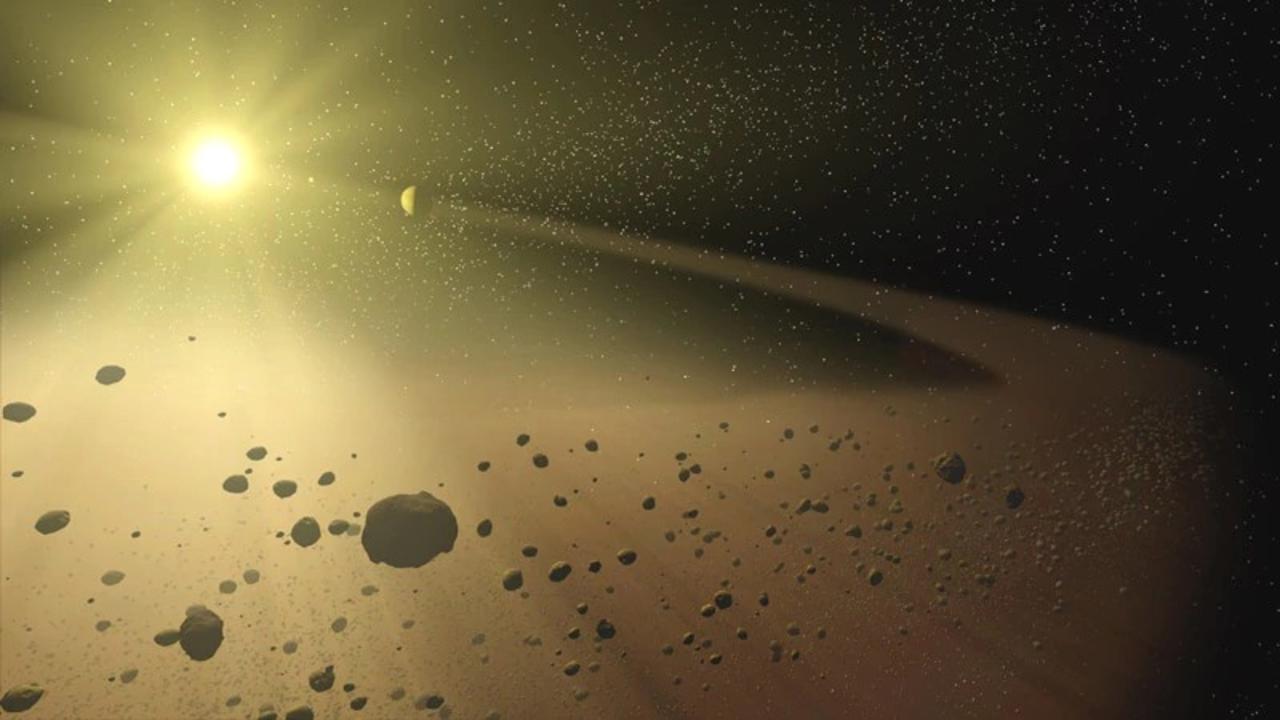Colossus and the Rocks of our Solar System

Is it only 8 planets, what else makes up our solar system?
What Are The Differences Between An Asteroid, Comet, Meteoroid, Meteor and Meteorite?
Asteroid: A relatively small, inactive, rocky body orbiting the Sun.
Comet: A relatively small, possibly active, object whose ice can vaporize in sunlight, comas [co-muh], or tails of gas and dust.
Meteoroid: A small bit of a comet or asteroid that orbits the Sun
Meteor: The light we see when a meteoroid enters the Earth's atmosphere and vaporizes. This is known as a shooting star or a meteor shower.
Meteorite: A meteoroid that makes it through Earth’s atmosphere and lands.
Meteoroid = Droid = Space
Meteorite = Right here = Earth
From Nasa.gov
- "Each day, Earth is nailed with more than 100 tons of dust and particles from space."
- "About once a year, an automobile-sized asteroid hits Earth's atmosphere, creates an impressive fireball, and burns up before reaching the surface."
- "Every 2,000 years or so, a meteoroid the size of a football field hits Earth and causes significant damage to the area."
- "Only once every few million years, an object large enough to threaten Earth's civilization comes along. Impact craters on Earth, the moon and other planetary bodies are evidence of these occurrences."
- "Space rocks smaller than about 25 meters (about 82 feet) will most likely burn up as they enter the Earth's atmosphere and cause little or no damage."
- "If a rocky meteoroid larger than 25 meters but smaller than one kilometer ( a little more than 1/2 mile) were to hit Earth, it would likely cause local damage to the impact area."
- "We believe anything larger than one to two kilometers could have worldwide effects."
- "By comparison, asteroids that populate the main asteroid belt between Mars and Jupiter, and pose no threat to Earth, can be as big as 940 kilometers (about 583 miles) across."
Next, we'll move on to where these icy bodies can live.
Asteroid Belt
When the Solar System was just beginning to form, bits of rock, metal, and dust that circled the Sun starting clumping together to form large bodies, some of which became planets. However, not all of these combined to form planets. Some particles left over settled between Mars and Jupiter, forming the Asteroid Belt.
The Asteroid Belt contains billions, and maybe even trillions of asteroids. Most of these range from the size of boulders to a few thousand feet in diameter. In fact, people used to believe that the asteroid belt was made up of the remains of a planet, or one that didn’t quite finish forming. However, according to NASA, the total mass of the asteroid belt is actually less than the moon!, far too small to weigh in as a planet.
Kuiper Belt
In 1943, astronomer Kenneth Edgeworth put forth that more objects that orbit the Sun might exist beyond Neptune. In 1951, astronomer Gerard Kuiper predicted the existence of this ring of icy bodies as well. While today we call it the Kuiper Belt, some astronomers refer to it as the Edgeworth-Kuiper Belt.
Beyond our furthest planet Neptune, lies a region of space filled with these icy bodies. The Kuiper Belt includes trillions of objects, more than the Asteroid Belt, that remain from the early solar system.
The Kuiper Belt is an elliptical plane in space spanning from 30 times Earth's distance from the sun to 50 times that. That’s up to 4.5 billion miles! The Kuiper Belt is similar to the asteroid belt, but KBO’s or Kuiper Belt Objects, tend to be more icy rather than rocky.
Scientists estimate that thousands of bodies more than 62 miles in diameter travel around the sun in the Kuiper Belt, along with trillions of smaller objects like comets. “The region also contains several dwarf planets — round worlds too large to be considered asteroids and yet not qualifying as planets because they're too small, on an odd orbit, and don't clear out the space around them the way the eight planets do.”
- Pluto
Oort Cloud
In 1950, Dutch astronomer Jan Oort wonders about comets that entered the solar system that they came from a cloud of icy bodies that may lie as far as 100,000 times Earth's distance from the sun, a distance of up to 9.3 trillion miles (15 trillion kilometers).
We call it, the Oort Cloud, A giant shell of icy bodies thought to surround the solar system not as a disc, but a sphere, completely encapsulating our solar system with possibly trillions of frozen comets and asteroids.
These far away bodies are primarily composed of ices such as ammonia, methane, and water. These chucks are straight from the formation of our Solar System, and could give us insight into the environment we formed in.
- Sedna, thought to be three-quarters the size of Pluto, lies 8 billion miles (13 billion kilometers) from Earth and orbits the sun approximately every 10,500 years.
Join us in our mission!
We've been waiting for you! Join the community and support Space, But Messier! for as little as $1/month! We'll make it worth your while...